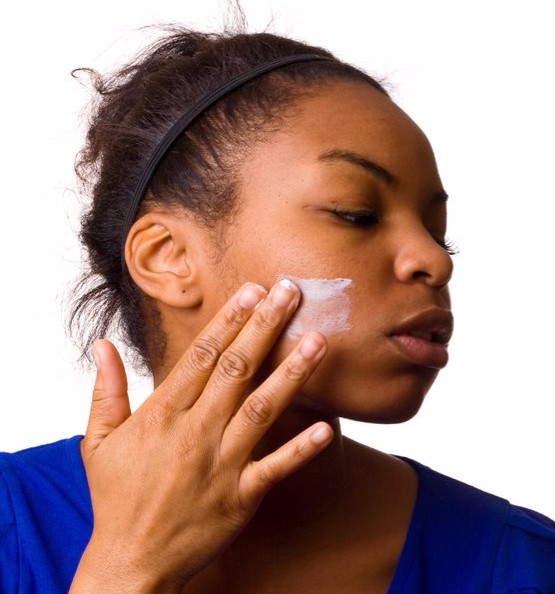
The Marie Claire fashion magazine has published a feature article exploring why black women in a chiefly black culture continue to bleach their skin.
In telling the story of Jody Cooper, 22, who said she never made a conscious choice to lighten her skin because everyone around her, including her mother, her aunt and her school friends, were all doing it. She said she rubbed creams onto her face and body, believing that she would transform herself into a “browning,” the term Jamaicans use for a lighter-skinned black person. Cooper said she liked the attention she received as a “browning” and having people think she was a little different. “When you black in Jamaica, nobody see you,” Cooper explains. She grew up in Payne Land, a lower-income neighborhood in Kingston, which was also home to black cultural icons like Bob Marley and Marcus Garvey. In this area, even today, lighter skin is thought to be the ideal.
When Cooper became a born-again Christian, she gave up skin bleaching as part of her conversion, and now her skin is back to “black.” While being lighter made her feel special, she says that her body has still not recovered from its years of exposure to the harsh bleaching chemicals, which left her with a rash and discoloration around her eyes. “The bleaching, I don’t get nothing from it,” she says, looking back, “and it damage my body.” Cooper’s neighbors and friends debate the issue. “Bleaching cut nature, it kill nature,” according to Sauna Boyd, but Nadia Lounds says she “loves” the bleaching creams that made her skin “clear.” The same debate is occurring throughout Jamaica as women try to determine what beauty means.
According to research conducted by Christopher Charles, a senior lecturer in political psychology at the University of the West Indies, the issue involves standards imposed by Eurocentrism and hundreds of years of colonial rule that has been handed down through socialization. Charles notes that, historically, lighter-skinned Jamaicans were the result of relationships between black slaves and white slave owners who often had more access to land and resources due to their white ancestry. Lighter brown skin remains an indication of privilege in Jamaica, with economic classes frequently divided along racial lines. When wealth and power are associated with white and brown skin, while poverty is associated with darker skin, skin bleaching represents a strategic choice., says Charles.
Dr. Donna Braham, a dermatologist with patients in Kingston and Ocho Rios, says that most of the ads for things people want are shown with lighter-skinned people. “If you pathologize people who lighten their complexion, you ignore the racism that incites them to do it.” In 2011, Jamaican newspapers reported that the Human Employment and Resource Training Trust, which trains people to work in the hospitality industry, received requests from its clients for “brownings.” While the Trust denied this was true, Dr. Braham says there is an implicit link between skin tone and success that is there from childhood. “You see that for you to be able to be anybody in life, you need to have a certain skin tone.”
According to Charles, the top three reasons people give for skin bleaching include wanting a lighter complexion, eliminating facial imperfections, and looking beautiful. People are rewarded for bleaching their skin as others tell them how beautiful they are. “There are social benefits to having light skin, even if manufactured.”
Many of the women who were interviewed for the Marie Claire article said they got compliments for their lighter skin and that photos of them with lighter skin got more views on social media. The rewards are great enough that many people are willing to spend significant amounts of money for skin bleaching products. While the average minimum wage in Jamaica is under $50 per week, many women say they spend $20 to $30 for the creams every few weeks and believe it is a good investment.
Jamaica’s popular culture has tended to perpetuate the myth that men are more attracted to paler women, and reggae artiste Buju Banton started a controversy in the 1990s with his song “Me Love Me Browning.” Peral Carr, who was interviewed for the article, said the song made her “feel very bad.” Now 52, she bleached her skin for many years, beginning when she was a teenager and people mocked her, saying, .”Blackie! You’re so black! Black as a hole!” she recalls. Things like this make people bleach, she said. Banton subsequently released his song “Love Me Black Woman” when criticized for hurting black pride, but it was not as big a hit as his previous recording. Nardo Ranks, a dancehall star, mocked the women who bleach in his song “Dem a Bleach” and blamed Banton for sparking higher sales of bleaching creams.
For Charles, however, the decision to bleach is more complicated and not necessarily a rejection of black culture or an indication for low self-esteem. He says “the self-hate narrative as the dominant narrative just doesn’t make any sense. According to Charles, “When you pathologize people who lighten their complexion, you ignore the racism and colorism and the system that incites them to do this. You’re actually blaming the victim.”
The Marie Claire article written by Rebekah Kebede offers a wide-ranging exploration of the issue and covers additional aspects of skin bleaching in Jamaica in detail. The article is accompanied by photographs taken by Jamaican author Marlon James







